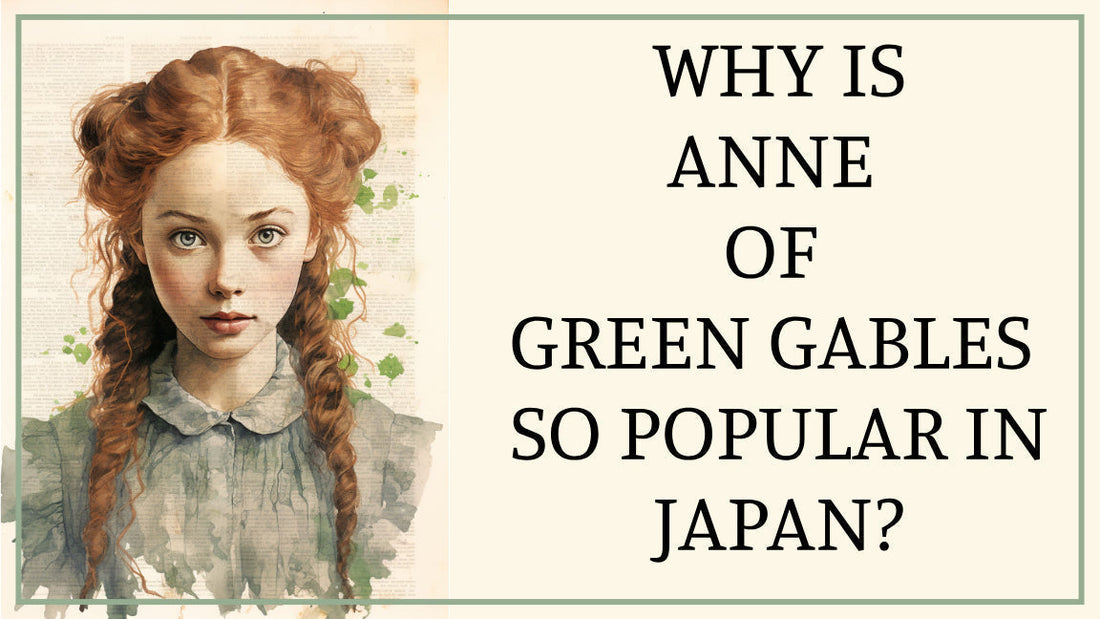In doing my research, I found that Anne of Green Gables has enjoyed extraordinary and lasting popularity in Japan due to a combination of historical, cultural, and literary factors. Here's a detailed exploration of why Anne Shirley’s story resonates so deeply with Japanese readers.
1. Historical Context and the Power of Translation

The first Japanese translation of Anne of Green Gables was published in 1952 by Hanako Muraoka, just after World War II. Japan was in the midst of recovery from the war, and many children were orphaned or displaced. Anne’s story, that of an orphan finding love, identity, and purpose, resonated.
- Muraoka’s translation brought emotional depth and cultural accessibility to Japanese readers.
- The novel was added to school reading lists in the 1950s and again in the 1970s.
- The challenges Anne had to face mirrored those faced by many Japanese citizens rebuilding their lives.
2. Anne Seen as a Symbol of Hope and Charm
Anne Shirley’s character embodies a combination of traits deeply admired in Japan, optimism, resilience, charm, and a love of beauty.
- Her imaginative spirit and emotional expressiveness offered comfort during uncertain times.
- Anne’s “kawaii” appeal, love of nature, and romantic worldview align with traditional Japanese values and aesthetics.
- Her rise from hardship to joy reflects a universal narrative of transformation and healing.
3. The Cultural Symbiosis with Japanese Values
Anne’s sensitivity to nature, poetic way of speaking, and reverence for seasons, particularly cherry blossoms, harmonize beautifully with Japanese cultural traditions.
- Naming a tree “Snow Queen” mirrors Japan’s sakura (cherry blossom) symbolism: beauty and impermanence.
- Her appreciation for rural life connects to Japan’s nostalgic love for its countryside heritage.
- The novel fits into the “iyashikei” (healing) genre, soft, emotionally restorative stories.
4. Gaining Enduring Appeal Through Japanese Media

The 1979 anime Akage no An (Red-haired Anne), directed by Isao Takahata and involving Hayao Miyazaki, introduced Anne to a new generation of Japanese fans.
- The anime is still broadcast in reruns, demonstrating its lasting influence.
- Numerous other adaptations including manga, dramas and, musicals have maintained Anne’s relevance.
- The 2014 TV drama Hanako to Anne, based on translator Muraoka’s life also revived interest.
5. A Blended Role Model for Modern and Traditional Values
While Anne is a trailblazing, independent heroine, Muraoka’s translation emphasized Anne's humility, modesty, and respect, aligning her with Japanese ideals of womanhood.
- This blend of boldness and traditional virtue helped Anne appeal to both modern and conservative audiences.
- She became an ideal figure, strong yet respectful, imaginative yet grounded.
6. Fan Devotion and Cultural Pilgrimage to PEI
The Japanese connection to Anne has grown into a cultural phenomenon:
- Thousands of Japanese tourists travel to Prince Edward Island each year to visit Green Gables.
- Fans dress as Anne, dye their hair red, and participate in themed weddings or festivals.
- Green Gables replicas and theme parks in Japan celebrate Anne’s world.
Conclusion
Anne’s popularity in Japan stems from perfect timing, cultural compatibility, and emotional resonance. Her story provided postwar Japan with hope and healing. Her character reflects values the Japanese hold dear, nature, imagination, humility, and perseverance. Combined with beloved media adaptations and fan devotion, Anne of Green Gables has become not just a novel, but a beloved part of Japanese culture.

FAQs
1. When was Anne of Green Gables first translated into Japanese?
It was translated in 1952 by Hanako Muraoka, shortly after WWII.
2. Why do Japanese readers connect with Anne Shirley?
Her story of resilience, imagination, and longing for belonging resonated with postwar Japanese society.
3. What role did the 1979 anime Akage no An play?
It introduced Anne to a wider Japanese audience and remains one of the most beloved adaptations.
4. Is Anne of Green Gables taught in Japanese schools?
Yes, it has been part of school curricula, especially in the 1950s and 1970s.
5. Why do Japanese tourists visit Prince Edward Island?
To experience the real-life Green Gables and connect with Anne’s world in person.
